#wyatt soft icons
Explore tagged Tumblr posts
Photo
R





Leslie, let’s gets married tonight.
PARKS AND RECREATION Season 5 Episode 14 “Leslie and Ben”
#prev#they’ve always been husband and wife shaped idk what to tell u#parks and rec#benslie#ben wyatt#leslie knope#I CRY SO MUCH AT THIS EPISODE#THEY ARE SO SOFT#RON CRAFTING THE WEDDING RINGS!!!!#ICONIC!!
616 notes
·
View notes
Text
#Music and Musicians
Top 10 iconic singing drummers in the history of rock, striking with their skill.

Today I'm going to tell you about the guys who didn't just bang on the drums, but also sang in a way that rocked you. And you know, this is not a joke to you - try to beat a complex rhythm yourself and at the same time not lose the melody! It's like juggling burning torches and reciting poetry at the same time. But these virtuosos managed to do it with such ease, as if they were born with drumsticks in their hands and a microphone at their mouth. Well, are you ready to plunge into the world of rhythm and melody? Let's go!
Ringo Starr (The Beatles)

And now let's talk about our favorite Beatle, Ringo Starr. Oh, there were so many jokes about his game! And the guy, by the way, set the rhythm for an entire era. "With a Little Help from My Friends", "Octopus's Garden" - it's just some kind of holiday!
By the way, do you know the funny thing about Ringo? He's left-handed! But it plays on the usual right-hand installation. Can you imagine how he suffered at first? But now he has such a style that you can't confuse it with anyone.
Phil Collins (Genesis)
Let's start with Phil Collins. You know, this guy is a real jack of all trades! That's what I understand - talent!

youtube
Don Henley (Eagles)
And here's Don Henley, the voice of "Hotel California" how can you sing like that and still beat out such complex rhythms? Unsurprisingly, the Eagles have sold over 150 million albums.
youtube
Roger Taylor (Queen)

Now about Roger Taylor. This guy didn't just bang the drums at Queen, he also sang in a way that took your breath away. Have you heard his "I'm In Love With My Car"? He wrote it! And his parts in "Bohemian Rhapsody"? It's just fantastic!
youtube
Levon Helm (The Band)
Levon Helm... Oh, that voice! Listening to him, it feels like you're somewhere on the dusty road of the American South. His "The Weight" is just a time machine in the 60s! And all this without letting go of the drumsticks.
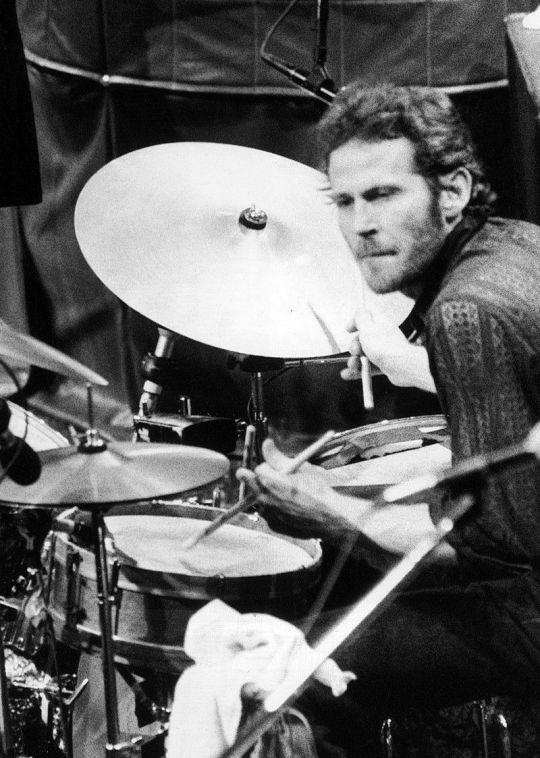
Here's my advice: find the album "The Band" from 1969. Turn it on, close your eyes, and you're already there-in Arkansas, among the cotton fields.
youtube
Peter Criss (Kiss)
Well, now let's talk about our "Cat Face" - Peter Criss! That's who really knew how to surprise. You know, usually this guy would hide behind his huge drum kit, but sometimes... bam! He would suddenly start singing, so much so that his jaw dropped. Take, for example, "Black Diamond". There, Peter not only beats out a rhythm that makes the floor shake, but also sings the chorus in his hoarse voice. And you know what? It turns out damn cool! And at concerts? Oh, he did wonders there. That's what I understand - talent in all fields.
youtube
Karen Carpenter (The Carpenters)
Karen Carpenter... That's a girl! The only one, by the way, on our list. You know, when I first heard her on the drums, I was very surprised. And when she sang, that's it, he was gone! Many professional musicians admired her talent as a drummer and vocalist.
youtube
Robert Wyatt (Soft Machine)
Listen, here's who I completely forgot about - Robert Wyatt from Soft Machine! Damn it, this dude is just something. One day I came across their album "Third", and there is such a song - "Moon in June". Oh my God, I almost fell off the stool! Imagine, Wyatt is not only playing the drums like crazy, but also sings the main vocals.

Dave Grohl (Nirvana, Foo Fighters)
Oh, guys, here comes our rock and roll multitouch - Dave Grohl! You know, I almost fell off my chair when I first saw this shaggy guy playing Nirvana drums, and then- bang! - and he's already the frontman of the Foo Fighters. But here's the funny thing: at concerts, sometimes it's like a magnet pulling him back to the drum kit. And then the real magic begins! You should have seen how he wields chopsticks and pulls his throat in "Sunday Rain" - just fire! Honestly, I don't even know if he's better at drums or his vocal cords.

And now let's take a look into the world of progressive metal with Brann Daylor from Mastodon. That's who the real drum virtuoso is! This guy manages not only to give out crazy rhythms, but also to sing at the same time in a way that takes your breath away.
Do you want to hear Brann in all his glory? Turn on "Oblivion" from the album "Crack the Skye". There he not only beats the most difficult rhythms, but also sings clean vocals, creating a stunning contrast with the growl of the main vocalist. And you know what? It just sounds cosmic!
#Music from A to Z#Youtube#phil collins#genesis#don henley#eagles#roger taylor#queen band#Spotify#levon helm#The Band#karen carpenter#the carpenters#ringo starr#the beatles#Brann Daylor#mastodon#music#my music#music love#musica#history music#spotify#rock music#rock#rock photography#my spotify#Music and Musicians
6 notes
·
View notes
Note
okay okay gotta ask any thoughts/vibes/headcanons/whatever from the new crossover list? (or any other crossovers for them that i missed?)
Yes yes yes
Billie
Alice and her being Brittana before Brittana idk idk. Either way I think they'd be besties
Ashton and her are absolutely gay skank royalty they would be the most iconic wlw/mlm solidarity he's so down for her to join the skanks
Bianca and her would be so fun it'd be such a good contrast of cheerio princess turned skank with huge overachiever (also maybe poly with Santana idk)
Chris would probably much rather Brittany be friends with her over Quinn and Santana but also Chris has a crush on her whether it's reciprocated or not she likes her
Isadora would be so so supportive of her becoming the skank queen she gets it they'd be so good
Knox and her having been a thing when she was golden girl cheerio princess to being besties when she isn't
Okay Billie probably would have been Marigold's like, icon before she was a skank but then afterwards I think she still would love her sm
Ramona would love her. I think Billie would bring her out of her shell so much
Steve loves his sister sm I can't imagine the drama when they realize it but he will support her endlessly
Beau
Brendan adores him okay he's always watching Tourney games to see him
Gabe would definitely be one to assume he's soft and then be very surprised when he isn't (I don't know if I ship exactly but if I do I can't imagine Gaston's reaction to Gabe dating a male fairy)
Stephen has been a fan of him for forever I absolutely vibe with them. Best Tourney teammates
Zinnia is obsessed with meeting him ok she has so many fairy questions and wonders
(And yes yes Oz ocs. Opal wants to adopt him, Donovan has so many questions and vibes, Eden would love him, all of it)
Genevieve
Kendall would be so so so so chill with her he'd probably be too much at first but then learn what's going on and chill out instantly
Rhett I love them. I think Rhett would like, Get It the most and try to help her (plus they both had a crush on Alex they can bond and grow from it together)
Sebastian adores her. He will give her so much support and has for so so long
Jade
Theodore is very happy to show her around Stars Hollow High he's going to be the best welcome committee and maybe crush on her
Thomas will have a crush on her for sure he's trying to be cool about it though (he is not cool)
James
I think Dahlia would have always been a fan of him but not able to really talk about it or talk to him because of Lorelai and she didn't argue with Lorelai for the longest time but when she realizes he's her brother she will probably attach to him asap
Jasmine....I'm not gonna like I ship them. I think Miss Patty would have been trying to get them together for years tbh but I think Jasmine would have tried to be chill about it and stop her even if she did like him
Lydia (the pain of her being like legally related to him because lowkey I could ship them) but anyways I think she may drive him a teensy bit insane with her occasional high maintenance pageantry behavior but I see them getting along more over time
Thomas if we don't ship Jasmine and James I can see Thomas and James just a little less. Thomas adores Luke a lot so they'd be around each other a lot
Wyatt and him would be so fun I can't tell what exact vibes I have for them but they're like, the same but different to me. If anyone could convince Wyatt to stay in Stars Hollow a little longer it'd be him
Sebastian
Theodore likes performing I see them vibing well, I don't know how they'd even really meet but maybe Theodore goes to Chilton for these crossover purposes idk idk
Thomas is also not a "in the spotlight" person so they can have that in common and chill (again maybe Thomas goes to Chilton for crossovers)
Wyatt and him would be so so fun I think they're both out of spotlight enough and Sebastian and him could be so great
3 notes
·
View notes
Text
#this is absolute crack#why did I make this poll#I’ll end up deleting this#watch#it 2017#it 2019#bill denbrough#eddie kaspbrack#richie tozier#ben hanscom#stan uris#Stanley uris#mike Hanlon#beverly marsh#Reddie#stenbrough
12 notes
·
View notes
Text
Carla Bley: The Top 25 icons in Jazz history
Carla Bley: The Top 25 pearls in Jazz historyCarla Bley: a life in MusicSubscribe & download the best scores and sheet music transcriptions from our Library.Carla Bley Big Band - Festival de Jazz de Paris 1988Track ListPersonnelBrowse in the Library:
Carla Bley: The Top 25 pearls in Jazz history
One of the finest and most productive of all female jazz instrumentalists, bandleaders and composers is Carla Bley. From her sprawling jazz opera Escalator Over The Hill to her arrangements for Charlie Haden’s Liberation Music Orchestra, and from her Big Carla Bley Band to her trio with saxophonist Andy Sheppard and bassist Steve Swallow, she has made her mark on all sizes of composition and ensemble. This ten-piece band toured in the 1980s and catches her iconoclastic reworking of gospel and big band jazz.
Carla Bley: a life in Music
Carla Bley (born Lovella May Borg, May 11, 1936) is an American jazz composer, pianist, organist and bandleader. An important figure in the free jazz movement of the 1960s, she is perhaps best known for her jazz opera Escalator over the Hill (released as a triple LP set), as well as a book of compositions that have been performed by many other artists, including Gary Burton, Jimmy Giuffre, George Russell, Art Farmer, John Scofield and her ex-husband Paul Bley. Every jazz fan knows the name of Carla Bley, but her relentless productivity and constant reinvention can make it difficult to grasp her contribution to music. I began listening to her in high school when I was enamored with the pianist Paul Bley, whose seminal nineteen-sixties LPs were filled with Carla Bley compositions. (The two were married.) My small home-town library also had a copy of “The Carla Bley Band: European Tour 1977,” a superb disk of rowdy horn soloists carousing through instantly memorable Bley compositions and arrangements. Some pieces change you forever. The deadly serious yet hilarious “Spangled Banner Minor and Other Patriotic Songs,” from that 1977 recording, celebrates and defaces several nationalistic themes, beginning with the American national anthem recast as Beethoven’s “Appassionata” Sonata. From the first notes onward, I was never quite the same again. The novelist and musician Wesley Stace has a similar story: “Aged sixteen, and full only of rock and pop music, I came upon Carla Bley by chance through a Pink Floyd solo project, Nick Mason’s ‘Fictitious Sports,’ which I only bought because the vocals were by my favorite singer, Robert Wyatt, once of Soft Machine. It’s a Carla Bley album in all but name: her songs embellished with brilliant and witty arrangements. I wanted to hear more. ‘Social Studies’ (also from 1981) thus became the first jazz album I ever bought, opening up a whole world I knew nothing about. ‘Utviklingssang’ is perfect, all gorgeous melody and abstraction, no words required. She’s everything I want from instrumental music.”
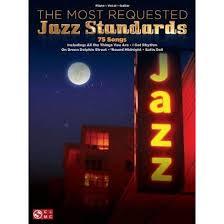
In the last half decade, many of Bley’s remaining peers from the early years have died: Paul Bley, Charlie Haden, Roswell Rudd, Ornette Coleman, Paul Motian. At eighty-two, Bley is still composing and practicing the piano every day. But it also felt like it was high time to rent a car, visit a hero, and try to get a few stories on the official record. Bley and her partner, the celebrated bassist Steve Swallow (and another living link to the revolutionary years of jazz) live in an upstate compound tucked away near Willow, New York. When I drove up, Bley and Swallow were just coming back from their daily walk through the woodland. Their lawn boasts an old oak tree and a massive chain-link dinosaur made by Steve Heller at Fabulous Furniture, in nearby Boiceville. The home offers enough room for two powerful artists and their personal libraries, not to mention striking paintings by Dorothée Mariano and Bill Beckman. Bley’s upstairs study is stocked with hundreds of her scores and an upright piano, on which she played me her latest opus, a sour ballad a bit in the Monk tradition, with just enough unusual crinkling in the corners to prevent it from being too square. When we sat down to talk, Bley proved to be witty and surreal, just like her music. (Swallow is the house barista and fact checker.) Bley’s early development as an independent spirit is well documented in the excellent 2011 book “Carla Bley,” by Amy C. Beal. I began a little further along, and asked her about Count Basie in the late nineteen-fifties. “Count Basie was playing at Birdland, Basin Street, and the Jazz Gallery when I was working as a cigarette girl,” she said. “I got to hear him more than anyone else, and it was an education.” Basie is still her favorite pianist: “He’s the final arbiter of how to play two notes. The distance and volume between two notes is always perfect.” At the end of the decade, her husband, an associate of Charles Mingus, Ornette Coleman, and Sonny Rollins, wanted to play more as a trio pianist but lacked material. One day Paul Bley came to Carla and said, “I need six tunes by tomorrow night.” There’s an obvious thread of European classical music in early Bley compositions, and this fit perfectly with the sixties jazz avant-garde. Ornette Coleman’s “Lonely Woman” is closer to a Mahler dirge than to Duke Ellington; Charles Mingus gave a deconstructed blues composition the European-style catalogue number “Folk Forms No. 1.” Many of Bley’s own pieces from that era have atonal gestures and abstract titles like “Ictus” and “Syndrome.” Among the many musicians listening carefully was Keith Jarrett, who told me that Paul Bley was, “Sort of like Ahmad with certain kinds of drugs.” Ahmad Jamal’s biggest hit was the D-major dance “Poinciana,” a bland old standard given immortality by Jamal’s rich jazz harmony and the drummer Vernel Fournier’s fresh take on a New Orleans second-line beat. Paul Bley’s recordings of Carla’s famous melody “Ida Lupino” have a G-major dance with a new kind of surreal perspective. When comparing “Poinciana” and “Ida Lupino” back to back, Jarrett’s comment—“certain kinds of drugs”—makes sense. However, while Ahmad Jamal had to use plenty of imagination when rescoring “Poinciana,” Paul Bley just needed to get the paper from his wife and read it down: Bley’s piano score of “Ida Lupino,” with inner voices and canonic echoes, is complete. Like many jazzers, I first heard of the film-noir icon Ida Lupino thanks to Bley’s indelible theme. I finally got to ask her about the title. “I just saw a few movies she did, and I thought she was sort of stripped and basic,” Bley said. “She didn’t have all the sex appeal that a female star should have. She was sort of serious. Maybe I felt a bond with her for that reason. I wanted to be serious. It wasn’t anything to do with her being the first female director. I learned that later.” Another significant early Bley work is “Jesus Maria,” first recorded by Jimmy Giuffre with Paul Bley and Steve Swallow for Verve, in 1961. Among the listeners inspired by this trio was Manfred Eicher, who reissued these recordings for ECM, in 1990. The reissue leads off with the rather classical “Jesus Maria,” where the pretty notes seem to suspend in the air, suggesting the famous “ECM sound” several years before the label was founded. I asked Eicher about Bley’s early compositions and he said, “There are so many of them, each as well crafted as pieces by Satie or Mompou—or Thelonious Monk for that matter. Carla belongs in that tradition of radical originality.” Bley was a radical, but she also sought structure. She told me about the early-sixties avant-garde: “In free playing, everybody played as loud as they could and as fast as they could and as high as they could. I liked them, but there was also what Max Gordon said about a bunch of guys screaming their heads off: ‘Call the pound.’ I think the music needed a setting. Just as it was, I thought free jazz needed work.” A key turned in the lock when Bley heard the roiling, church-inspired experimental tenor saxophonist Albert Ayler, who she says was, “Maudlin! Maudlin in the most wonderful way. He gave me license to play something that was really corny and love it.” Another watershed was “Sgt. Pepper’s Lonely Hearts Club Band” by the Beatles, a suite of songs that form a bigger picture. “An artist friend of mine came over one day with this album,” Bley told me. “He said, ‘Jazz is dead. All the artists are listening to this. We don’t listen to jazz anymore. This is it.’ ”
Subscribe & download the best scores and sheet music transcriptions from our Library.
Carla Bley Big Band - Festival de Jazz de Paris 1988
https://www.youtube.com/watch?v=AQUHXCEflK0 Track List 00:00:09 - Song of the eternal waiting of canute 00:10:24 - The girl who cried champagne - I 00:18:05 - The girl who cried champagne - II 00:21:50 - The girl who cried champagne - III 00:29:29 - Real life hits 00:40:53 - Fleur carnivore 00:52:48 - Lo ultimo 01:00:51 - end credits Personnel Carla Bley - piano Christof Lauer - saxophone-soprano Wolfgang Puschnig - saxophone-alto Andy Sheppard - saxophone-tenor Roberto Ottini - saxophone-baryton Lew Soloff - trompette Jens Winter - trompette Gary Valente - trombone Frank Lacy - cor Bob Stewart - tuba Daniel Beaussier - oboe, flute Karen Mantler - orgue Steve Swallow - bass Buddy Williams - batterie Don Alias - percussions Read the full article
0 notes
Text









ㅤㅤᘏ ⠀⠀た ִֶָ ⠀⠀𝙡𝙤𝙡4𝙢0𝙣 ⠀⠀𓂃⠀⠀𝗹𝘂𝘃. ♡ ⠀、
ㅤㅤㅤᨒ⠀⠀☁️ㅤ﹅ㅤㅤ.𝗐𝖾 𝗒𝗈𝗎𝗇𝗀`ㅤㅤ𓂅ㅤ
#wyatt onf#onf wyatt#wyatt soft icons#wyatt soft moodboard#wyatt icons#onf icons#onf soft icons#vsco soft icons#vsco icons#icons vsco#vsco effect#vsco moodboard#vsco recipe
49 notes
·
View notes
Text
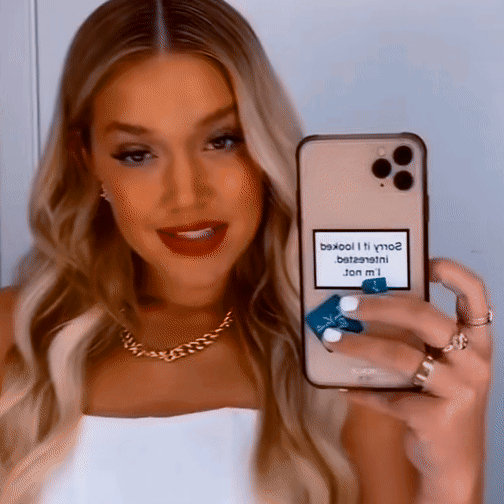
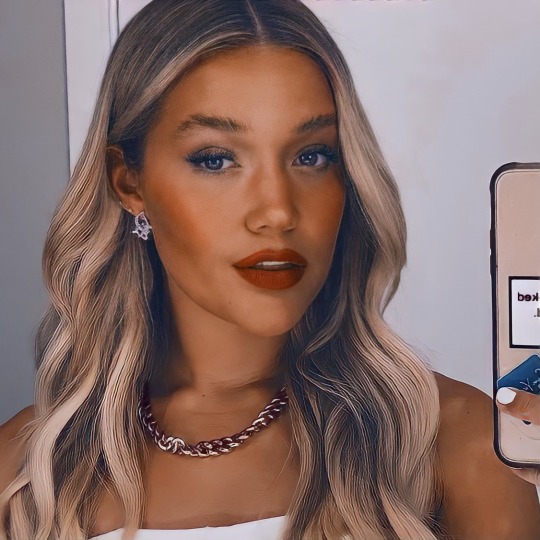








﹏ ⟦ ▓ 🍉ꫴ/ Ꮮɪк℮ ᪤ ᖇモЪĿ᥆g ⊹ ✿ 䨻䨻 春の花, 晴れた日 cr3dits me ❲ > ̫< ❳ ♥︎
#Olivia#Olivia ponton#icons Olivia#Olivia icons#Olivia ponton icons#icons olivia ponton#icons darianka sanchez#nate wyatt#triller house#tiktok girls#tiktok icons#kio cyr#kio cyr icons#bwbejacksonpsd#bwbejackson#blonde girl#icons#soft packs#psd#icons with psd#psd coloring#site model with psd#girls with psd#random girls icons#site model tumblr#packs with psd#packs#psd download#site twitter models#twitter site models
89 notes
·
View notes
Text
@torietaa
Follow me and like or reposit! Xoxo guys ^-^

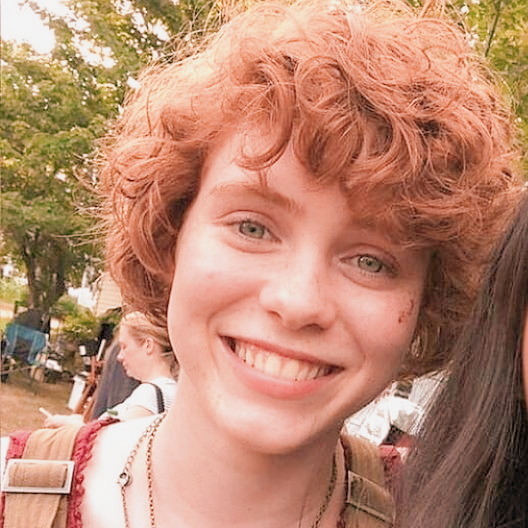

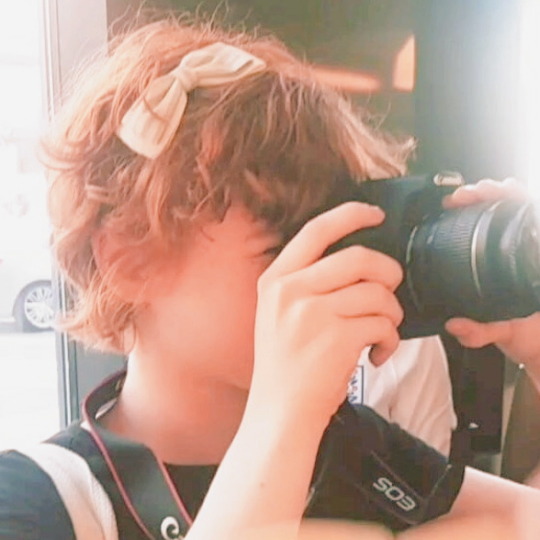
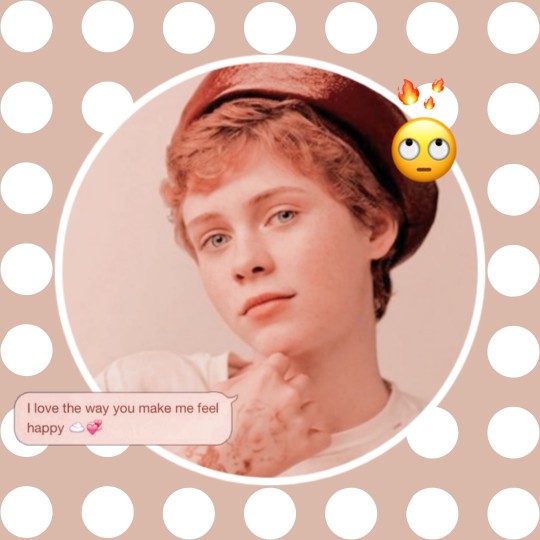
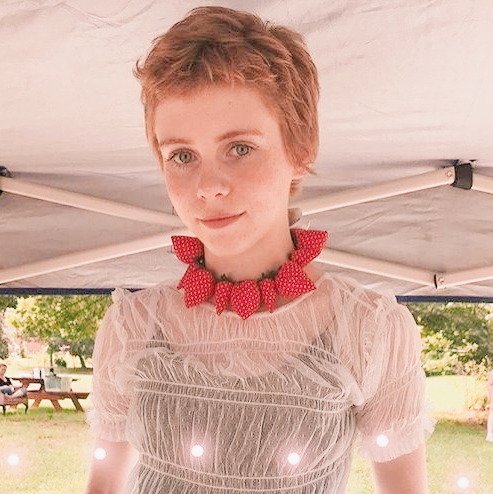
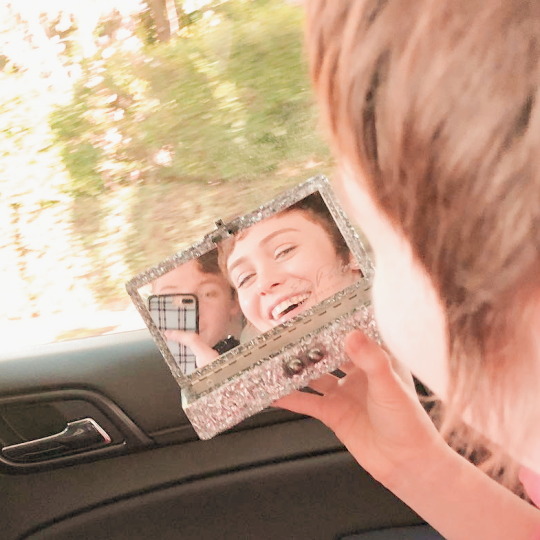

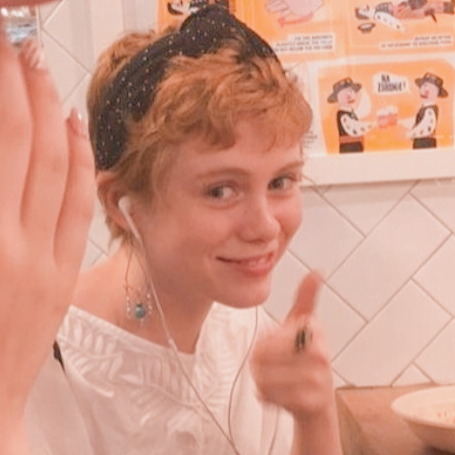
Syd or sophia
⸝⸜⸝⸜⸝⸜⸝⸜⸝⸜⸝⸜⸝⸜⸝⸜⸝⸜⸝⸜⸝⸜⸝⸜⸝⸜⸝⸜⸝⸜⸝⸜⸝⸜⸝⸜⸝⸜⸝⸜⸝⸜⸝⸜
┊ಬಬಬ.I Am Not Okay with This
┊あ!Ꜣ✄⇲᩠⃝𝖭𝖾𝗍𝖿𝗅𝗂𝗑ꕤ⋰あかᩚᩚꯨ‰᪵᪼⃕ ]]].
┊🥕ꕥあ⁚:♥︎aesth....˽᪼⢆▒〭⁆🏘️
#I Am Not Okay with This#netflix series#sophia lillis#wyatt oleff#Syd#stan#netflix#icons#random icons#soft moodboard#moodboard#vscoedit#vsco soft icons#vsco icons#vsco#vscofilter#aeshthetic#series#soft icons#packs#soft packs
152 notes
·
View notes
Text


(灬HYOJIN & SEUNGJOON 灬)♡
#onf wyatt#onf hyojin#onf#onf imagines#onf j us#ONF#fuse#edit#aesthetic#korea#lee seungjoon#seungjoon icons#onf seungjoon#hyojin#soft icons#etion#j-us#mizuguchi yuto#yuto#wyatt#shim jaeyoung#mk#jaeyoung#lee changyoon#Spotify#kpop aesthetic#kpop#korea group
26 notes
·
View notes
Photo






why I like you, I don't know (I don't know) why I'm keeping wanting you (wanting you)
#onf#wyatt#hyojin#kim hyojin#shim jaeyoung#[ my stuff ]#[ mine:gifs ]#this is the most iconic part of the choreo and I'll fight anyone who says otherwise#I'm here for these soft vibes#ONF SAID GAY RIGHTS BITCHES#flashing gifs tw
263 notes
·
View notes
Text






، # : bᥱᥱp﹆ bᥱᥱp *¡! 온앤오프 __,, rᥲndom 𝗳 𝗿 𝗼 𝗺 @.𝕠𝕟𝕗 [ ゃıcons ] : lıkᥱ or rᥱblog ıf you 𝘀𝗮𝘃𝗲 or 𝘂𝘀𝗲 ¿ ¿
#icons#kpop icons#kpop#icons psd#kpopidol#soft icons#onf#onf mk#onf wyatt#onf u#onf j us#onf hyojin#onf etion#onf icons#bgroup icons#bgroup packs#boy group
24 notes
·
View notes
Text


#ben x beverly#beverly marsh#finn wolfhard#it chapter 2#it chapter one#jack dylan grazer#sophia lillis#wyatt oleff#vscogirl#egirl edit#soft icons#soft girl#uwu
107 notes
·
View notes
Text









༄ Sofia Bryant icons
♡• like/reblog if u save
#sofia#bryant#sofia bryant#icons#with psd#vintage#vsco soft icons#vsco icons#aesthetic#grunge#tumblr girl#i am not okay with this#netflix#IANOWT#sophia lillis#wyatt oleff#kathleen rose perkins#aidan wojtak-hissong#richard ellis#edit
68 notes
·
View notes
Photo









2 notes
·
View notes
Text
Carla Bley: The Top 25 icons in Jazz history
Table of Contents
Carla Bley: The Top 25 pearls in Jazz history
One of the finest and most productive of all female jazz instrumentalists, bandleaders and composers is Carla Bley. From her sprawling jazz opera Escalator Over The Hill to her arrangements for Charlie Haden’s Liberation Music Orchestra, and from her Big Carla Bley Band to her trio with saxophonist Andy Sheppard and bassist Steve Swallow, she has made her mark on all sizes of composition and ensemble. This ten-piece band toured in the 1980s and catches her iconoclastic reworking of gospel and big band jazz.
Carla Bley: a life in Music
Carla Bley (born Lovella May Borg, May 11, 1936) is an American jazz composer, pianist, organist and bandleader. An important figure in the free jazz movement of the 1960s, she is perhaps best known for her jazz opera Escalator over the Hill (released as a triple LP set), as well as a book of compositions that have been performed by many other artists, including Gary Burton, Jimmy Giuffre, George Russell, Art Farmer, John Scofield and her ex-husband Paul Bley. Every jazz fan knows the name of Carla Bley, but her relentless productivity and constant reinvention can make it difficult to grasp her contribution to music. I began listening to her in high school when I was enamored with the pianist Paul Bley, whose seminal nineteen-sixties LPs were filled with Carla Bley compositions. (The two were married.) My small home-town library also had a copy of “The Carla Bley Band: European Tour 1977,” a superb disk of rowdy horn soloists carousing through instantly memorable Bley compositions and arrangements. Some pieces change you forever. The deadly serious yet hilarious “Spangled Banner Minor and Other Patriotic Songs,” from that 1977 recording, celebrates and defaces several nationalistic themes, beginning with the American national anthem recast as Beethoven’s “Appassionata” Sonata. From the first notes onward, I was never quite the same again. The novelist and musician Wesley Stace has a similar story: “Aged sixteen, and full only of rock and pop music, I came upon Carla Bley by chance through a Pink Floyd solo project, Nick Mason’s ‘Fictitious Sports,’ which I only bought because the vocals were by my favorite singer, Robert Wyatt, once of Soft Machine. It’s a Carla Bley album in all but name: her songs embellished with brilliant and witty arrangements. I wanted to hear more. ‘Social Studies’ (also from 1981) thus became the first jazz album I ever bought, opening up a whole world I knew nothing about. ‘Utviklingssang’ is perfect, all gorgeous melody and abstraction, no words required. She’s everything I want from instrumental music.”
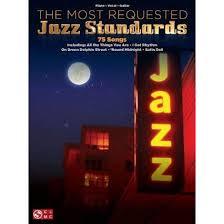
In the last half decade, many of Bley’s remaining peers from the early years have died: Paul Bley, Charlie Haden, Roswell Rudd, Ornette Coleman, Paul Motian. At eighty-two, Bley is still composing and practicing the piano every day. But it also felt like it was high time to rent a car, visit a hero, and try to get a few stories on the official record. Bley and her partner, the celebrated bassist Steve Swallow (and another living link to the revolutionary years of jazz) live in an upstate compound tucked away near Willow, New York. When I drove up, Bley and Swallow were just coming back from their daily walk through the woodland. Their lawn boasts an old oak tree and a massive chain-link dinosaur made by Steve Heller at Fabulous Furniture, in nearby Boiceville. The home offers enough room for two powerful artists and their personal libraries, not to mention striking paintings by Dorothée Mariano and Bill Beckman. Bley’s upstairs study is stocked with hundreds of her scores and an upright piano, on which she played me her latest opus, a sour ballad a bit in the Monk tradition, with just enough unusual crinkling in the corners to prevent it from being too square. When we sat down to talk, Bley proved to be witty and surreal, just like her music. (Swallow is the house barista and fact checker.) Bley’s early development as an independent spirit is well documented in the excellent 2011 book “Carla Bley,” by Amy C. Beal. I began a little further along, and asked her about Count Basie in the late nineteen-fifties. “Count Basie was playing at Birdland, Basin Street, and the Jazz Gallery when I was working as a cigarette girl,” she said. “I got to hear him more than anyone else, and it was an education.” Basie is still her favorite pianist: “He’s the final arbiter of how to play two notes. The distance and volume between two notes is always perfect.” At the end of the decade, her husband, an associate of Charles Mingus, Ornette Coleman, and Sonny Rollins, wanted to play more as a trio pianist but lacked material. One day Paul Bley came to Carla and said, “I need six tunes by tomorrow night.” There’s an obvious thread of European classical music in early Bley compositions, and this fit perfectly with the sixties jazz avant-garde. Ornette Coleman’s “Lonely Woman” is closer to a Mahler dirge than to Duke Ellington; Charles Mingus gave a deconstructed blues composition the European-style catalogue number “Folk Forms No. 1.” Many of Bley’s own pieces from that era have atonal gestures and abstract titles like “Ictus” and “Syndrome.” Among the many musicians listening carefully was Keith Jarrett, who told me that Paul Bley was, “Sort of like Ahmad with certain kinds of drugs.” Ahmad Jamal’s biggest hit was the D-major dance “Poinciana,” a bland old standard given immortality by Jamal’s rich jazz harmony and the drummer Vernel Fournier’s fresh take on a New Orleans second-line beat. Paul Bley’s recordings of Carla’s famous melody “Ida Lupino” have a G-major dance with a new kind of surreal perspective. When comparing “Poinciana” and “Ida Lupino” back to back, Jarrett’s comment—“certain kinds of drugs”—makes sense. However, while Ahmad Jamal had to use plenty of imagination when rescoring “Poinciana,” Paul Bley just needed to get the paper from his wife and read it down: Bley’s piano score of “Ida Lupino,” with inner voices and canonic echoes, is complete. Like many jazzers, I first heard of the film-noir icon Ida Lupino thanks to Bley’s indelible theme. I finally got to ask her about the title. “I just saw a few movies she did, and I thought she was sort of stripped and basic,” Bley said. “She didn’t have all the sex appeal that a female star should have. She was sort of serious. Maybe I felt a bond with her for that reason. I wanted to be serious. It wasn’t anything to do with her being the first female director. I learned that later.” Another significant early Bley work is “Jesus Maria,” first recorded by Jimmy Giuffre with Paul Bley and Steve Swallow for Verve, in 1961. Among the listeners inspired by this trio was Manfred Eicher, who reissued these recordings for ECM, in 1990. The reissue leads off with the rather classical “Jesus Maria,” where the pretty notes seem to suspend in the air, suggesting the famous “ECM sound” several years before the label was founded. I asked Eicher about Bley’s early compositions and he said, “There are so many of them, each as well crafted as pieces by Satie or Mompou—or Thelonious Monk for that matter. Carla belongs in that tradition of radical originality.” Bley was a radical, but she also sought structure. She told me about the early-sixties avant-garde: “In free playing, everybody played as loud as they could and as fast as they could and as high as they could. I liked them, but there was also what Max Gordon said about a bunch of guys screaming their heads off: ‘Call the pound.’ I think the music needed a setting. Just as it was, I thought free jazz needed work.” A key turned in the lock when Bley heard the roiling, church-inspired experimental tenor saxophonist Albert Ayler, who she says was, “Maudlin! Maudlin in the most wonderful way. He gave me license to play something that was really corny and love it.” Another watershed was “Sgt. Pepper’s Lonely Hearts Club Band” by the Beatles, a suite of songs that form a bigger picture. “An artist friend of mine came over one day with this album,” Bley told me. “He said, ‘Jazz is dead. All the artists are listening to this. We don’t listen to jazz anymore. This is it.’ ”
Subscribe & download the best scores and sheet music transcriptions from our Library.
Carla Bley Big Band - Festival de Jazz de Paris 1988
https://www.youtube.com/watch?v=AQUHXCEflK0 Track List 00:00:09 - Song of the eternal waiting of canute 00:10:24 - The girl who cried champagne - I 00:18:05 - The girl who cried champagne - II 00:21:50 - The girl who cried champagne - III 00:29:29 - Real life hits 00:40:53 - Fleur carnivore 00:52:48 - Lo ultimo 01:00:51 - end credits Personnel Carla Bley - piano Christof Lauer - saxophone-soprano Wolfgang Puschnig - saxophone-alto Andy Sheppard - saxophone-tenor Roberto Ottini - saxophone-baryton Lew Soloff - trompette Jens Winter - trompette Gary Valente - trombone Frank Lacy - cor Bob Stewart - tuba Daniel Beaussier - oboe, flute Karen Mantler - orgue Steve Swallow - bass Buddy Williams - batterie Don Alias - percussions Read the full article
0 notes
Photo









꒰ onf icons ”♡ᵎ꒱
♡… like or reblog to support us! ♡… pictures aren’t mine. ♡… see more like this here
#onf icons#onf soft icons#onf matching icons#onf laun#onf yuto#onf jus#onf wyatt#onf u#onf hyojin#onf mk#onf etion#onf changyoon#onf seungjoon#onf jaeyoung#onf minkyun#onf minseok#laun icons#laun soft icons#yuto icons#yuto soft icons#u icons#u soft icons#changyoon icons#changyoon soft icons#hyojin icons#hyojin soft icons#minseok icons#minseok soft icons#mk icons#mk soft icons
14 notes
·
View notes